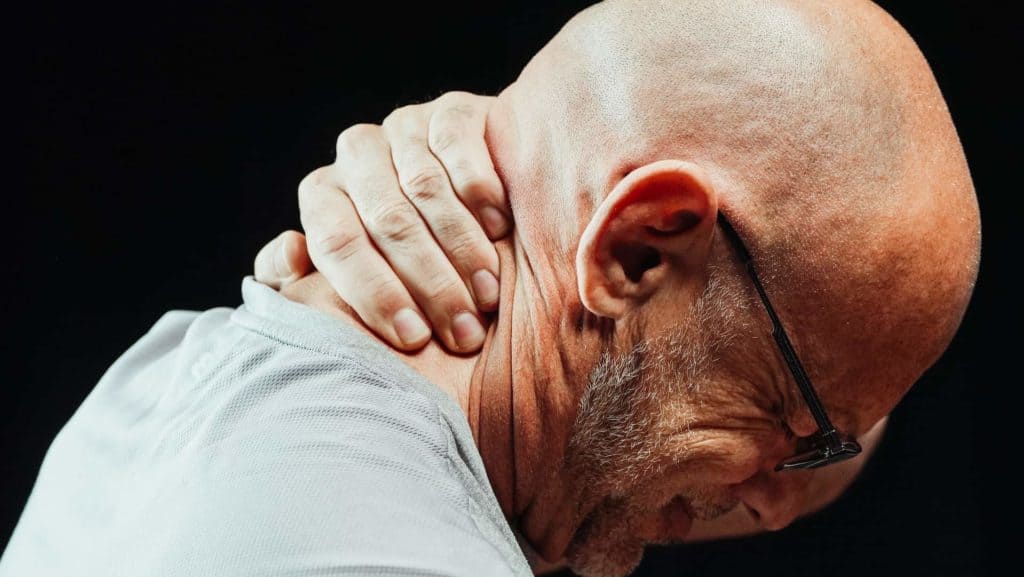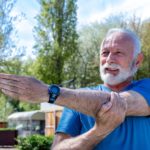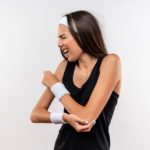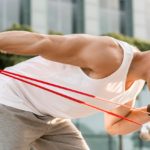
Kim Hoffman
NASM CES (Corrective Exercise Specialist) and Certified Personal Trainer
Jump to:
- Musculoskeletal misalignment
- Spine curvature
- Osteoarthritis
- Neck, shoulder and back pain
- Headaches and migraines
- Temporomandibular joint syndrome (TMJ)
- Fatigue and low energy levels
- Decreased flexibility
- Hypertension and poor circulation
- Balance and falling
- Quality of sleep
- Indigestion and heartburn
- Constipation
- Incontinence
- Decreased sexual function
- Labored breathing
- Mental health
- Decreased lifespan
- Related Questions
Poor posture refers to the position of our body in which the muscles and ligaments need to work harder to maintain balance.
Poor posture can
- Decrease our sexual desire and function
- Decrease our lifespan
- Cause constipation and incontinence
and cause another dozen or so health issues.
Are you perhaps already dealing with some of these negative effects, but you’re unsure about the real reason behind them. We would then suggest learning more about the 18 most common effects that poor posture has on our health.
Musculoskeletal misalignment
Our skeleton is mainly supported by muscles and ligaments. These tissues work most efficiently when everything is well-aligned, because then they don’t need to overcompensate to keep our center of gravity in optimal position.
When the alignment changes, it affects how the muscles work to maintain their stability. One such example is upper crossed syndrome. In this position our chest muscles, attached to the front of our shoulders, are always contracted.
If this continues for an extended period of time / years, our shoulders joints will stay in that forward position because there are no muscles strong enough to pull them back into alignment.
Spine curvature (wear and tear of the spine)
Like with any joint – and the spine is made of many joints – muscles and ligaments can move them in the desired directions. When we adopt a suboptimal posture, we put extra stretch on the ligaments and muscles.
Overtime, that stretching will pull the vertebrae out of their normal position and cause hyperkyphosis, an unnatural rounding of the back.

This is also called postural kyphosis, which mostly occurs in adolescents when they slouch, due to the immaturity of the muscles and spine, and in elderly, due to decreased muscle strength.[1]
Other spinal conditions often caused by poor posture
Other conditions exacerbated by poor posture include:
- Degenerative disc disease
- Bulging disc
- Herniated disc (also known as disc prolapse or slipped disc)
Disc degeneration is the natural wear and tear of the spine and does not normally cause pain, except when it affects other muscles, joints or nerves.
Disc degeneration can be exacerbated by poor posture
Bulging or herniated discs are often caused by injury, repetitive movements or poor posture.
In between each vertebra, there is an intervertebral disc which acts as a shock-absorber. With aging, annulus fibrosus on the outside and a jelly-like substance called a nucleus, on the inside, become brittle, dry out and lose their strength.
After many years of repetitive movements, the annulus can tear and the nucleus will leak out and press onto the nerves, causing a herniation.
When this bulging or herniation presses on the sciatic nerve, this is called sciatica, which can cause pain or tingling down the leg.
Sciatica is one of the most common conditions people have when it comes to the spine. About 40% of the population in New Zealand will experience this at some point in their lives.
Osteoarthritis
There are more than 140 conditions that fall under the term ‘arthritis’. Arthritis means ‘inflammation of the joint’ and can affect any part of the body.
Osteoarthritis is the most common form and can affect
- Joint
- Cartilage
- Ligaments
- Muscles
While arthritis is often caused by hereditary factors, osteoarthritis is caused by external factors such as
- Aging
- Gender
- Obesity
- Injuries
- Wear and tear (certain occupations where some joints are constantly being used)
In both cases, exercise helps to improve or maintain joint mobility and strengthens the muscles around the joint. Without exercising, the joint will become stiffer and the condition may worsen.
If you are obese or have a job where the effected joint is often used, poor posture can exacerbate osteoarthritis.
Neck, shoulder and back pain
Pain in our neck, shoulders and upper back is very common when we have poor posture.
With forward head posture, the lower part of our cervical spine goes into hyperflexion, but the upper part of the spine hyperextends – this is because the brain will automatically try to keep the head up, so we can look straight ahead.

This means that some muscles in the neck and back will have to work overtime to counterbalance this abnormal pull of gravity, which leads to painful strains and muscle spasms.
Headaches and migraines
Experts used to think that tension-type headaches were caused by muscle contractions, but research now seems to suggest that constant muscle contractions increase pain sensitivity which causes the headaches and migraines.
When muscles contract, the blood circulation is reduced which results in an accumulation of waste products, such as lactic acid, water and carbon dioxide. When muscles relax, blood circulation returns and the waste products get flushed out.
RELATED — Bad posture can impact your health: Getting it straight
If muscle tightness persists for a prolonged period of time, the “waste products” pile up which causes irritation in nerve fibers.
In tension headaches, tight muscles are the source of pain, but in migraines, muscle tightness stimulates the headache. In either case, it would be beneficial to improve your posture and make all muscles function optimally.
Temporomandibular joint syndrome (TMJ)
TMJ, also called TMD – temporomandibular disorder/dysfunction, is an umbrella term for a number of conditions involving the temporomandibular joint, which connects our jaw to our temple.
Slouching or slumping puts our body off-balance which creates an imbalance in muscle strength in our jaws.
Poor posture is one of the main causes for TMJ
Some symptoms of this disorder are
- Headaches
- Popping noises
- Face, jaw and neck pain.
Fatigue and low energy levels
Dr. Roger Sperry, a Nobel prize winning neuropsychologist, said that 90% of the stimulation and nutrition to the brain is generated by the movement of the spine.[2]
In other words, more than 90% of the energy output created by the brain is used to keep our body balanced in everyday situations, postures and movements.

Source: Robinson, M., Effective Assessments of a Short-Duration Poor Posture on Upper Limb Muscle Fatigue Before Physical Exercise. (2020)
This means that the more the brain and the body need to work to compensate for our poor posture, the less energy is available for thinking, metabolism and healing, which causes tiredness and fatigue.
Decreased flexibility and movement
Because of the extra tension in our muscles, we won’t be able to relax them fully. Over time, this will become almost permanent to the point where we’ll need external interventions, such as massages to help stimulate relaxation.
When we get to this point, our body is not able to fully flex or extend the affected joint.
Hypertension and poor circulation
As part of our natural muscle contractions, blood flow changes. As soon as our muscles relax, blood flow returns to normal.
When our muscles are constantly contracted, blood circulation will be impacted. When this happens, our heart needs to work harder to pump the blood through our body, which can lead to high blood pressure.
Poor balance and increased risk of falling
Poor posture can affect our balance, especially as we age, because our center of gravity and our load distribution changes.
For example, if we have tight hip flexors, our abdominals and glute muscles may become lengthened and weak. This can lead to hyper lordosis of the lumbar spine.
If our body can’t compensate, our center of gravity will pull our body forward and our balance will be off.
A problem with compensation is that we may be in more pain or compensate even more to avoid the pain. Research has shown that pain avoidance, manifested as fear of movement or “kinesiophobia,” impacts muscular stabilization and can affect normal posture and balance patterns.
Over time, patients, particularly older adults, adapt to these altered movement patterns as pain coping mechanisms at the expense of balance, and therefore increase their risk for falls.[3]
Quality of sleep
Sleep can be affected by poor posture, because we can’t breathe in as deeply to fill our lungs.
RELATED — Why we sleep: The role of sleep in our healthy life
This means that our brain is not getting all the oxygen it needs to fully repair the body during the night and our energy levels and sleep will be negatively affected.
This also affects our musculoskeletal system. When we’re suffering from neck, back and shoulder pain due to bad posture, we’re essentially creating small tears in the muscles, same as we do during exercise.
While we sleep, those tears are meant to be repaired. But when our sleeping is affected, our muscles can’t recover and repair as well as they should.
Indigestion and heartburn
One way poor posture affects our digestive system is due to extra pressure on our abdomen and intestines. This extra pressure can force stomach acid in the wrong direction, causing heartburn.
Constipation
Another consequence of poor posture is that this abdominal pressure makes it harder for the stomach and intestines to process and eliminate waste.
Poor posture can cause bloating and constipation

When on the toilet (and doing number 2), our knees should be higher than our hips to allow for easy and comfortable passage of the stool.
Incontinence
The extra abdominal pressure that slouching puts on our body can also cause incontinence, specifically stress incontinence, such as when we laugh or cough.
This puts extra pressure on the bladder, which also decreases the ability of the pelvic floor muscles to hold against that pressure. When we cough or laugh, we put even more pressure on the abdomen and can force out urine.
Decreased sexual function
Poor posture can cause sexual dysfunction in both men and women.
When we slouch, we round our lower back and this posture shortens and tightens the pelvic floor muscles, which play a role in arousal, sensation and stamina.
This means the muscles can’t exert their power and strength resulting in weak or non-existent orgasms.
Another side effect of tight pelvic floor muscles is that, for women, sexual intercourse may be painful, because the muscles can’t relax.
Labored breathing
With poor posture our lungs and diaphragm can be affected. Sinking into a chair or slouching is a very common position to adopt, but it puts extra pressure on our abdominal muscles and diaphragm.
This affects our ability to breathe well, because if our diaphragm and lungs can’t expand properly, they can prevent us from taking deep breaths.
Impact on our mental health
Poor posture can affect our mood and mental health.
This is quite simple – when we slump forward, we’re more likely to think negative thoughts, but when we stand upright, we feel more powerful and confident.
One study shows that upright posture can increase high arousal positive affect, which are feelings of vigor and excitement. This makes us more alert and active, and can lower our cortisol levels.[4]
Decreased lifespan
Another study found that high arousal positive affect is the driving force for longer life expectancy. When we improve our posture, we change the way we think and have a positive impact on our lifespan.[5]

Poor posture causes many conditions and illnesses that can, directly or indirectly, lead to a decreased life expectancy.
Poor posture increases our chances of heart disease, obesity, anxiety, and high blood pressure among others, which can all shorten our life.
Related Questions
1. Can yoga and stretching help with poor posture?
Most definitely. Yoga and stretching help with lengthening and strengthening our muscles which, in turn, improves our posture.
RELATED — Physical and psychological benefits of yoga: Your mind and body will be grateful
2. What are good exercises for improving posture?
The goal is to stretch tight muscles and strengthen weaker ones. In most cases, this means stretching our chest, thighs/hips and hamstrings while strengthening our glutes, core and back muscles.
RELATED — Your Guide to Good Posture: Tips and Exercises
3. If I have a sedentary job, how often should I get up and move around?
The ideal scenario is to move around or stretch every 30 minutes.
If this is not feasible, the best thing you can do is to move a lot in your seat – slouch, sit upright and lean back. This teaches our body not to get too used to one position.
If your days are mostly sedentary, and you have little to no time to workout or even go out for a walk, we suggest that you “cheat” that schedule. To make exercise a part of your daily routine, check out Hoffmann’s Hacks.
Kim Hoffmann is a certified Personal Trainer and Corrective Exercise Specialist based in Auckland. She also specialises in women’s health and fitness by taking into consideration the menstrual cycle and hormones and implementing them in different workout plans…
If you would like to learn more about Kim, see Expert: Kim Hoffmann.
References
(1) Lam, J.C., Mukhdomi, T. (2021). Kyphosis. Retrieved from https://www.ncbi.nlm.nih.gov/books/NBK558945/
(2) Zoldy, G. Posture and spinal hygiene improves brain function. Escarpment Magazine. Retrieved from https://www.escarpmentmagazine.ca/wellness/posture-and-spinal-hygiene-improves-brain-function/#:~:text=%E2%80%9C90%25%20of%20the%20stimulation%20and,body%20in%20its%20gravitational%20field.
(3) Weiniger, S., Enix, D. (2018). An undervalued assessment. Chiropractic Economics. Retrieved from https://www.researchgate.net/profile/Dennis-Enix/publication/348634238_An_undervalued_assessment_Posture_low-back_pain_and_risk_of_falls/links/600884b792851c13fe26a477/An-undervalued-assessment-Posture-low-back-pain-and-risk-of-falls.pdf
(4) Hoyt, L. T., Craske, M. G., Mineka, S., Adam, E. K. (2016) Positive and Negative Affect and Arousal: Cross-Sectional and Longitudinal Associations with Adolescent Cortisol Diurnal Rhythms. Psychosomatic Magazine. Retrieved from https://www.ncbi.nlm.nih.gov/pmc/articles/PMC4431930/
(5) Petrie, K. J., Pressman, S. D., Pennebaker, J. W., Øverland, S., Tell, G. S., Sivertsen, B. (2018). Which Aspects of Positive Affect Are Related to Mortality? Society of Behavioral Medicine. Retrieved from https://www.fmhs.auckland.ac.nz/assets/fmhs/som/psychmed/petrie/docs/2018%20PA%20mortality.pdf






